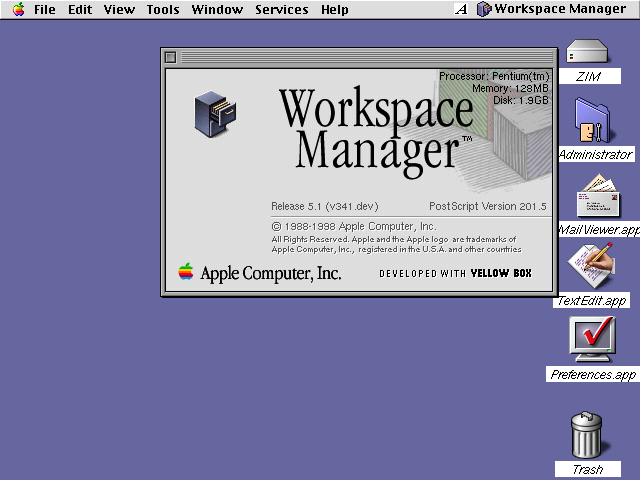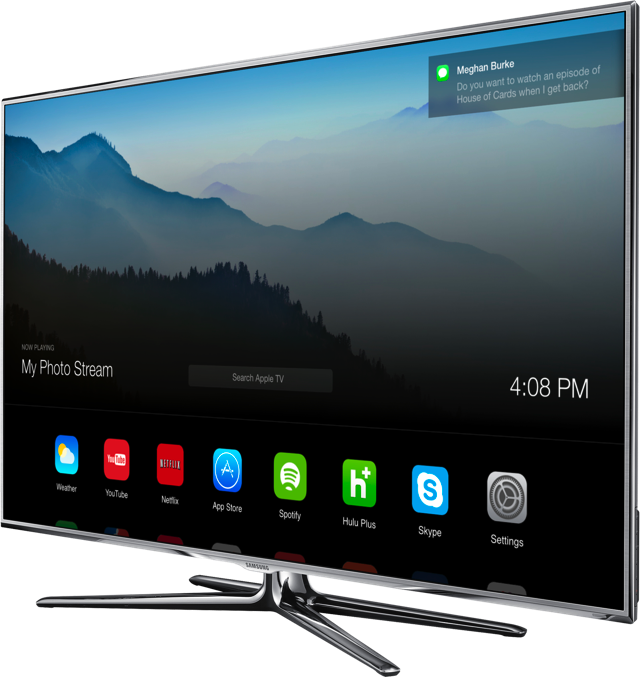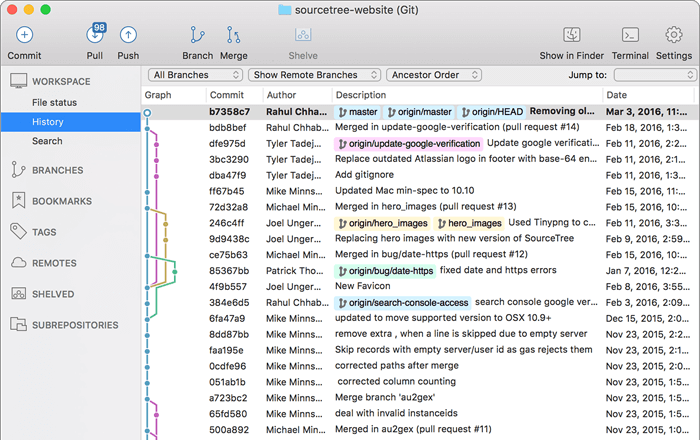The easiest way to install Nmap and Zenmap on Mac OS X is to use our installer. The Mac OS X section of the Nmap download page provides a file named nmap.dmg, where is the version number of the most recent release. The.dmg file is known as a. By the engineers of our recording studios in order to be able to work longer without the extreme light of the standard Mac OS X Aqua theme. 02 May 2007 7:31 pm: 23.94 MB: AmunRaa Recording Studio 2.0 by Themer: 2008: 0 Bytes: AppleWood by DeXtop: 09 Oct 2006 12:35 am: 0.
Updated: January 9, 2020 Home » Bitcoin [ Buy, Sell, Mine & Invest ]
Assembly GUI programming for Mac OS X. Ask Question Asked 9 years, 5 months ago. Active 9 years, 1 month ago. Viewed 3k times 13. I’d like to know how can I do a simple assembly program for Mac OS X that shows a window on the screen and put some coloured text on that window. The code may call some Carbon or Cocoa APIs. Mac OS X GUI rev. 7891 for R 4.1.x: high-sierra-Release.dmg: R-GUI-7891-4.1-high-sierra-Release.dmg: To install, open the image and drag the R icon to your Applications folder. Alternatively the GUI can be run directly off that image without copying if you just want to test it. Build configurations with '64' suffix are 64-bit builds, all others.
With Cryptocurrency price stock shooting through the roof, BitCoin is making all the other altcoin a good choice. Ethereum and Cryptocurrency in general are designed from the ground up to be as open and transparent as possible. The client diversity is a huge win for the entire ecosystem, it lets us verify that the protocol while keeping the door open for new innovation. However, due to the lack of GUI Client, it can be very confusing for end-users. We’ve compiled some of the more user friendly Ethereum mining software for the general public.
Gui Mac Os X
Alternative 2020 Article ➤ 10 Best BitCoin Alternatives – Profitable Cryptocurrencies Mining With Home Computers
Why Ethereum Cryptocurrency instead of the more popular BitCoin? Ethereum is one of the most ambitious blockchain project. It runs its own cryptocurrency, called Ether, but goes beyond being just digital currency. Ethereum is a decentralized platform that allows building smart contracts: decentralized applications (dapps) that run as they coded without any possibility of censorship, downtime, fraud or third parties interference.
Ethereum Vs. Bitcoin: What Sets Them Apart? Cryptocurrency Ether could potentially prove more lucrative than Bitcoin. It’s been flying in Bitcoin’s shadow, but investors are taking notice of its powerful financial technology.
↓ 01 – Parity | Windows | macOS | Docker | Ubuntu
Parity Technologies is proud to present our powerful new Parity Browser. Integrated directly into your Web browser, Parity is the fastest and most secure way of interacting with the Ethereum network. They’ve created the world’s fastest and lightest Ethereum client and integrated it directly into your web browser. Using it you can access all the features of the Ethereum network including powerful Decentralised applications and the multitude of cryptocurrencies issued on ethereum. Works great on Microsoft’s Windows 10 and Apple’s macOS.
- High Performance – Tuned, hand-optimised use of low-level Rust-language, JITEVM turbocharges execution of complex contracts and Multi-level in-memory caching
- Ultra Reliable – Memory and concurrency safety guaranteed by Rust language, Actor-based modularity ensures maximal resilience, and Unit-tested and peer-reviewed from day one
- Future Proof – Standard, JSON-based, chain-specification format, EVM plugins allow native speed contracts, and Actor-based modular architecture with IPC
- Small Footprint – Rust’s ownership tracking facilitates minimal memory footprint, Cache management gives fine control to user, and State-trie pruning minimises storage footprint
↓ 02 – MinerGate | Windows | macOS | Fedora | Ubuntu
MinerGate is a mining pool created by a group of cryptocoin enthusiasts. It is the first pool which provides service for merged mining. This means that while mining on our pool you can mine different coins simultaniously without decrease of hashrate for major coin.
↓ 03 – cpp-ethereum | Windows | macOS | Docker | Ubuntu
cpp-ethereum is the third most popular of the Ethereum clients, behind geth (the go client) and Parity (the rust client). The code is exceptionally portable and has been used successfully on a very broad range of operating systems and hardware. cpp-ethereum is extremely portable and is used on a very broad range of platforms.

↓ 04 – WinEth | Windows
Mining Ethereum just got easy with one click mining for AMD and NVidia Cards on Microsoft Windows. Mining ETH on Windows can be easy and profitable if you have appropriate hardware. The best hardware is a Gaming PC equipped with one or more high-end video cards. Mining is not feasible on low-end video cards or machines without dedicated video cards. You need to have a GPU (video card) with at least 4GB of memory for mining Ethereum. The Radeon HD 7970, R9 and RX series are all good choices. nVidia 1060 and 1080 cards also work well.
- Graphical Windows app targetting Win7 through Win10, 64-bit only
- CUDA and OpenCL – CUDA 5.2+ right now
- Automatically configures itself to Nanopool for the wallet address you provide
- Background (low power) mode and “Mine only when Idle” mode
- Automatic updates and automatic transmission of errors including GPU type and driver version using Microsoft Application Insights, so we can identify and resolve problems automatically
- There is a dev fee of one minute of mining every 100 minutes
- Binaries are signed with an extended verification signing certificate from digicode to provide some level of confidence it is not malware.
↓ 05 – Go Ethereum ( Official ) | Windows | macOS | Ubuntu
Go Ethereum is one of the three original implementations (along with C++ and Python) of the Ethereum protocol. It is written in Go, fully open source and licensed under the GNU LGPL v3. Go Ethereum is available either as a standalone client called Geth that you can install on pretty much any operating system, or as a library that you can embed in your Go, Android or iOS projects.
Recommended for you:
This directory contains binaries for a base distribution and packages to run on Mac OS X (release 10.6 and above). Mac OS 8.6 to 9.2 (and Mac OS X 10.1) are no longer supported but you can find the last supported release of R for these systems (which is R 1.7.1) here. Releases for old Mac OS X systems (through Mac OS X 10.5) and PowerPC Macs can be found in the old directory.
Note: CRAN does not have Mac OS X systems and cannot check these binaries for viruses.Although we take precautions when assembling binaries, please use the normal precautions with downloaded executables.
Package binaries for R versions older than 3.2.0 are only available from the CRAN archive so users of such versions should adjust the CRAN mirror setting (https://cran-archive.r-project.org) accordingly.
R 4.0.3 'Bunny-Wunnies Freak Out' released on 2020/10/10
Please check the MD5 checksum of the downloaded image to ensure that it has not been tampered with or corrupted during the mirroring process. For example type
openssl sha1 R-4.0.3.pkg
in the Terminal application to print the SHA1 checksum for the R-4.0.3.pkg image. On Mac OS X 10.7 and later you can also validate the signature using
pkgutil --check-signature R-4.0.3.pkg
Latest release:
| R-4.0.3.pkg (notarized and signed) SHA1-hash: 8402f586aef1fdb12c6e34c73b286f87318fb1be (ca. 85MB) | R 4.0.3 binary for macOS 10.13 (High Sierra) and higher, signed and notarized package. Contains R 4.0.3 framework, R.app GUI 1.73 in 64-bit for Intel Macs, Tcl/Tk 8.6.6 X11 libraries and Texinfo 6.7. The latter two components are optional and can be ommitted when choosing 'custom install', they are only needed if you want to use the tcltk R package or build package documentation from sources. Note: the use of X11 (including tcltk) requires XQuartz to be installed since it is no longer part of OS X. Always re-install XQuartz when upgrading your macOS to a new major version. Important: this release uses Xcode 10.1 and GNU Fortran 8.2. If you wish to compile R packages from sources, you will need to download and GNU Fortran 8.2 - see the tools directory. |
| NEWS (for Mac GUI) | News features and changes in the R.app Mac GUI |
| Mac-GUI-1.73.tar.gz SHA1-hash: 7f4b1d050757ce78545bdeb9d178a69d13046aa1 | Sources for the R.app GUI 1.73 for Mac OS X. This file is only needed if you want to join the development of the GUI, it is not intended for regular users. Read the INSTALL file for further instructions. |
Note: Previous R versions for El Capitan can be found in the el-capitan/base directory.Binaries for legacy OS X systems: | |
| R-3.6.3.nn.pkg (signed) SHA1-hash: c462c9b1f9b45d778f05b8d9aa25a9123b3557c4 (ca. 77MB) | R 3.6.3 binary for OS X 10.11 (El Capitan) and higher, signed package. Contains R 3.6.3 framework, R.app GUI 1.70 in 64-bit for Intel Macs, Tcl/Tk 8.6.6 X11 libraries and Texinfo 5.2. The latter two components are optional and can be ommitted when choosing 'custom install', they are only needed if you want to use the tcltk R package or build package documentation from sources. |
| R-3.3.3.pkg MD5-hash: 893ba010f303e666e19f86e4800f1fbf SHA1-hash: 5ae71b000b15805f95f38c08c45972d51ce3d027 (ca. 71MB) | R 3.3.3 binary for Mac OS X 10.9 (Mavericks) and higher, signed package. Contains R 3.3.3 framework, R.app GUI 1.69 in 64-bit for Intel Macs, Tcl/Tk 8.6.0 X11 libraries and Texinfo 5.2. The latter two components are optional and can be ommitted when choosing 'custom install', it is only needed if you want to use the tcltk R package or build package documentation from sources. Note: the use of X11 (including tcltk) requires XQuartz to be installed since it is no longer part of OS X. Always re-install XQuartz when upgrading your OS X to a new major version. |
| R-3.2.1-snowleopard.pkg MD5-hash: 58fe9d01314d9cb75ff80ccfb914fd65 SHA1-hash: be6e91db12bac22a324f0cb51c7efa9063ece0d0 (ca. 68MB) | R 3.2.1 legacy binary for Mac OS X 10.6 (Snow Leopard) - 10.8 (Mountain Lion), signed package. Contains R 3.2.1 framework, R.app GUI 1.66 in 64-bit for Intel Macs. This package contains the R framework, 64-bit GUI (R.app), Tcl/Tk 8.6.0 X11 libraries and Texinfop 5.2. GNU Fortran is NOT included (needed if you want to compile packages from sources that contain FORTRAN code) please see the tools directory. NOTE: the binary support for OS X before Mavericks is being phased out, we do not expect further releases! |
 The new R.app Cocoa GUI has been written by Simon Urbanek and Stefano Iacus with contributions from many developers and translators world-wide, see 'About R' in the GUI.
The new R.app Cocoa GUI has been written by Simon Urbanek and Stefano Iacus with contributions from many developers and translators world-wide, see 'About R' in the GUI.Subdirectories:
| tools | Additional tools necessary for building R for Mac OS X: Universal GNU Fortran compiler for Mac OS X (see R for Mac tools page for details). |
| base | Binaries of R builds for macOS 10.13 or higher (High Sierra) |
| contrib | Binaries of package builds for macOS 10.13 or higher (High Sierra) |
| el-capitan | Binaries of package builds for OS X 10.11 or higher (El Capitan build) |
| mavericks | Binaries of package builds for Mac OS X 10.9 or higher (Mavericks build) |
| old | Previously released R versions for Mac OS X |
You may also want to read the R FAQ and R for Mac OS X FAQ. For discussion of Mac-related topics and reporting Mac-specific bugs, please use the R-SIG-Mac mailing list.
Information, tools and most recent daily builds of the R GUI, R-patched and R-devel can be found at http://mac.R-project.org/. Please visit that page especially during beta stages to help us test the Mac OS X binaries before final release!
Package maintainers should visit CRAN check summary page to see whether their package is compatible with the current build of R for Mac OS X.
Mac Os Versions

Binary libraries for dependencies not present here are available from http://mac.R-project.org/libs and corresponding sources at http://mac.R-project.org/src.
Hacking Tool For Mac Os X
Last modified: 2020/10/10, by Simon Urbanek
